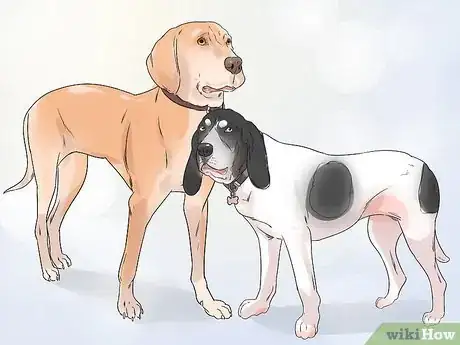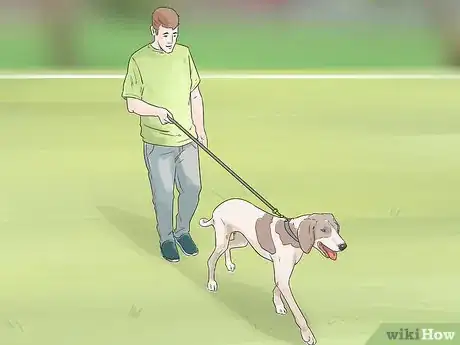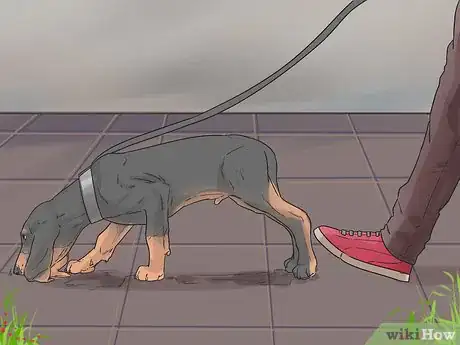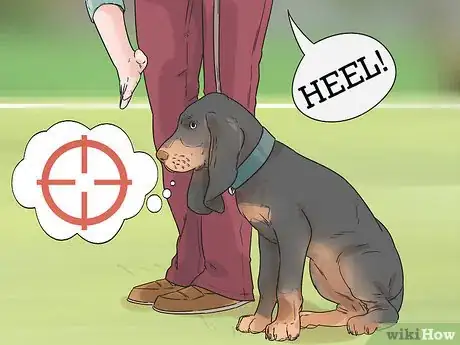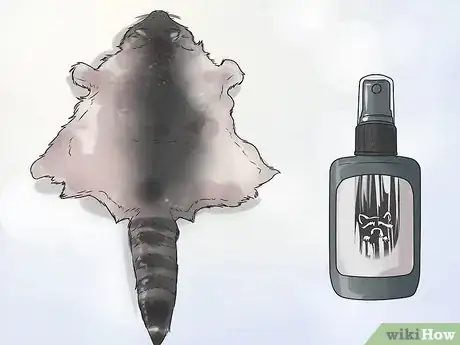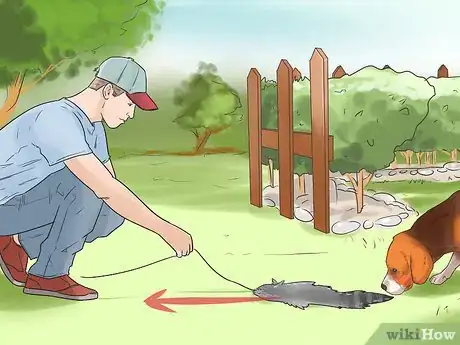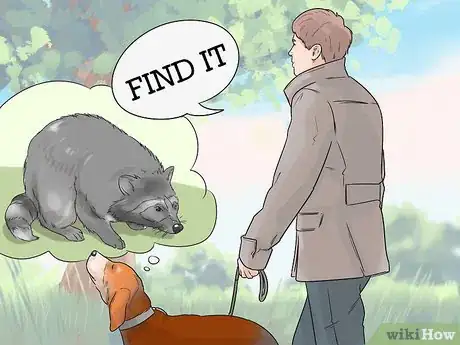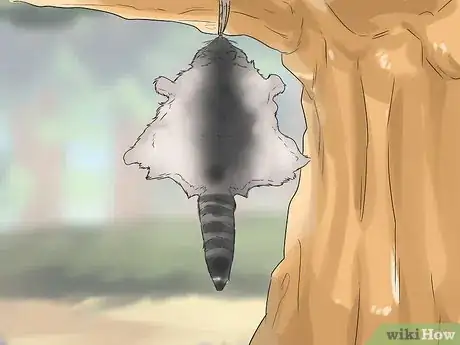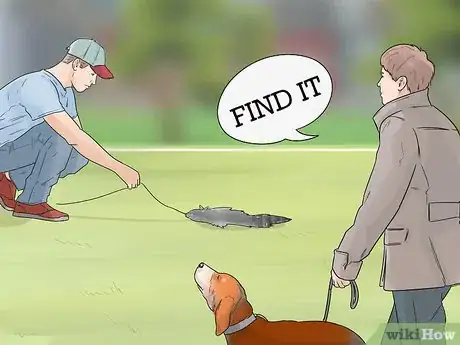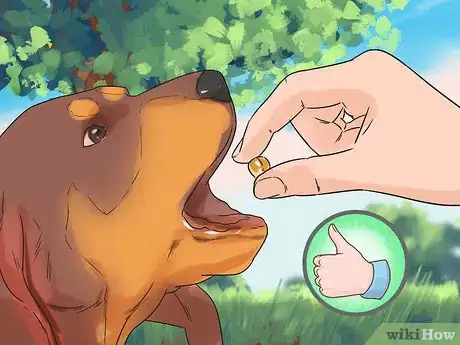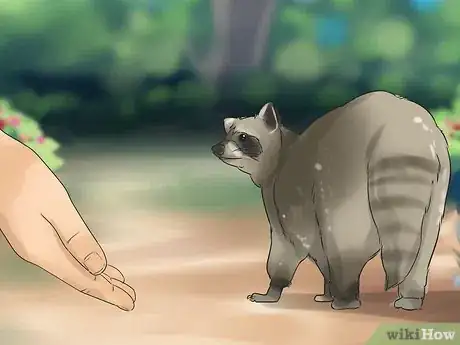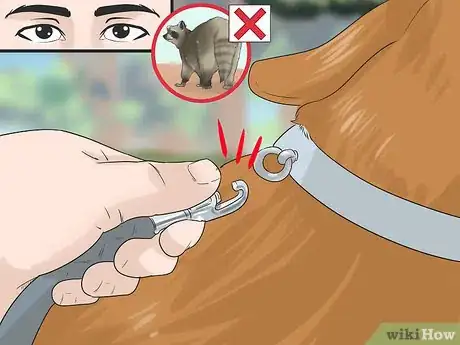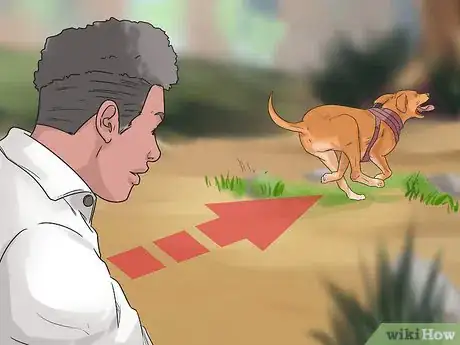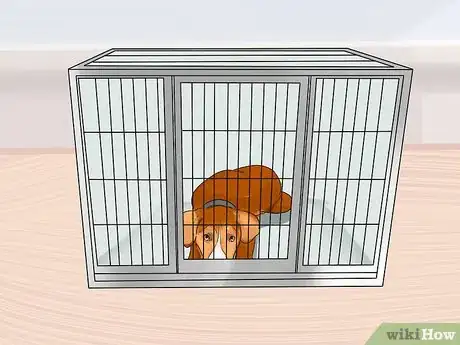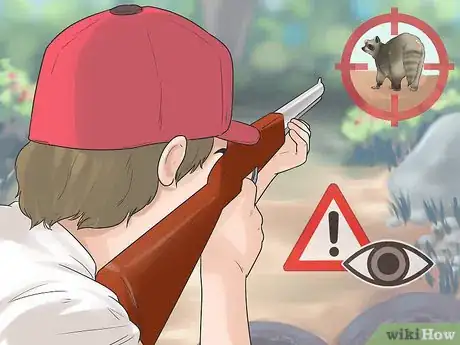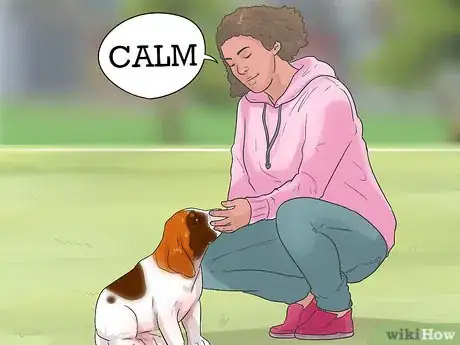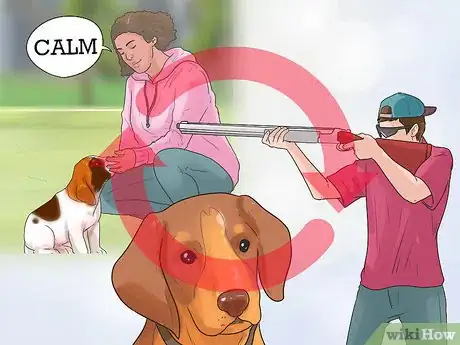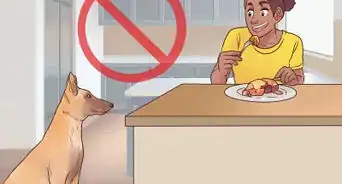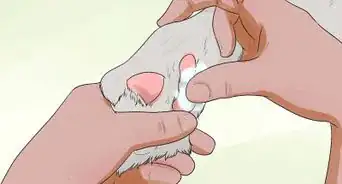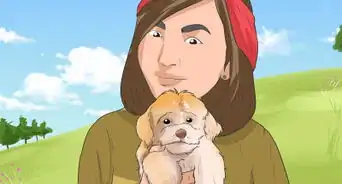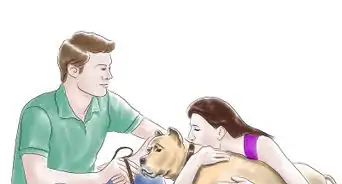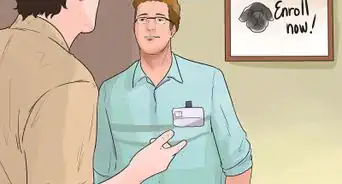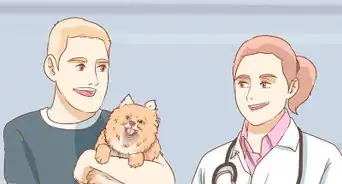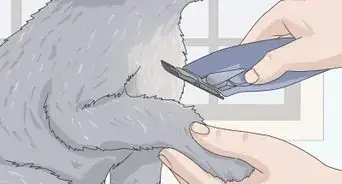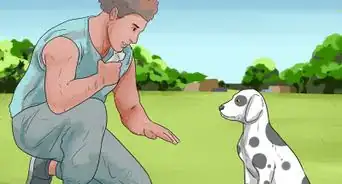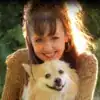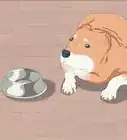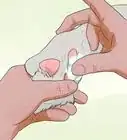This article was co-authored by Sheri Williams. Sheri Williams is a Certified Dog Trainer and Behaviorist and the Owner of sheriwilliams.com, a business that specializes in teaching veterans how to turn their dogs into service dogs or emotional support animals to assist with PTSD. Based in the Los Angeles, California metro area, Sheri has over 20 years of dog training experience and also runs a general dog training practice specializing in rehabilitating dogs through positive reinforcement training techniques. She is certified by The Animal Behavior and Training Association.
There are 9 references cited in this article, which can be found at the bottom of the page.
wikiHow marks an article as reader-approved once it receives enough positive feedback. In this case, several readers have written to tell us that this article was helpful to them, earning it our reader-approved status.
This article has been viewed 164,569 times.
Dogs have accompanied hunters for thousands of years. Coonhounds as best known for their scent tracking, and make great hunting partners for small game like raccoons. Training a coonhound to hunt raccoons is a multi-step process that involves acclimating your dog to raccoons and practicing scent tracking.
Steps
Strengthening Basic Commands
-
1Understand the breed characteristics. Coonhounds refer to a group of dogs that were all bred to hunt and tree raccoons. There are a number of different types of coonhounds, including redbone, black and tan, American English, blue-tick, treeing walker, red-tick, and the plot hound, that range in weight and size. Because they were bred to hunt, coonhounds have a strong prey drive and are eager to please their owners by working.[1]
- Coonhounds are the breed of choice for many small game hunters, especially in North America. They respond well to training and bred to be excellent hunters. They are hard workers and need daily exercise to satisfy their energy levels.[2]
- Coonhounds hunt by scent and are expert trackers. They tend to hunt almost entirely relying on scent before they tree or corner the animal.[3]
-
2Teach your coonhound to walk on a leash. Coonhounds are notorious for following scents and ignoring the calls of the owners when they’re on the trail. Dogs don't like to be controlled. So when you leash them, they act differently than they would if they were loose. Unless your dog is well trained, you should not let them off-leash in unsecured areas, like the open woods.[4] Leash training can be more difficult with coonhounds than with other dogs, this will be an ongoing process.
- Attach a leash to your dog’s collar and let them become acclimated to being on a leash. Begin walking with your dog and reward them with a small treat when they stay by your side. If they attempt to pull on the leash, stop walking and do not move until the dog returns to you. This way, they learn that the walk will only continue when they behave on the leash.[5]
- When dogs are born until they're two years old, they have a window called their imprint period. This is the best time to socialize. This is when they become social during their imprint period.
Advertisement -
3Strengthen the come command. The come command is one of the more difficult commands for coonhounds to learn. As scent hounds, these dogs are bred to smell and are known to wander off and ignore commands whenever they pick up a scent.[6] It is absolutely essential that your coonhound respond to the come command and return to you when they are called. When they do not know this command, you risk losing your dog to whatever scent they pick up, even if it leads them into dangerous areas.
- Practice the come command by calling your dog’s name once and then rewarding their good behavior with a small treat when they come. Avoid yelling their name out over and over again when they don’t respond; this teaches them that it’s alright to ignore your call.
-
4Train in appropriate conditions. Coonhound training should start when the puppy is about 12 weeks old and have received their shots. Ideally, training should take place either early in the morning or after it has rained. The wet ground helps the coonhound to follow a scent more effectively, and it gets the dog used to walking in water and through puddles.[7]
- It is recommended that you train your dog just prior to meal times, when they are hungry, rather than after meals.[8]
-
5Know when your puppy is ready to hunt. Coon hound puppies are ready to hunt when you are certain that they will follow your obedience commands. Any puppy that struggles to come when called or heel, even 10% of the time, is not ready to hunt. You can start acclimating them to scents while they are still in obedience training, but they should never be allowed to track off leash, track a live animal, or go on a hunt.
Training Your Coonhound to Follow a Scent
-
1Use a scent drag. Scent is the sense that coonhounds rely on the most during the hunt so you want to begin to acclimate a puppy to following a scent early on. You can purchase raccoon scent from an outdoor or sporting retailer, or online. Apply the scent to a drag, whether it is an old rag or a retrieving dummy.[9]
- You can also use a fresh raccoon carcass, but be aware that scent training is an ongoing process and you’ll need to procure new carcasses to train with as the old ones begin to deteriorate.
-
2Acclimate the dog to the scent. Let the puppy play with the scented dummy so they become acclimated to the smell. Reward the puppy with a small treat for showing interest, but take the drag away before they lose interest in it. This is called “putting them away hot” and helps you to control your puppy’s interest in the scent.[10]
- Repeat this process for at least three days, continuing to put the drag away while it’s hot.
-
3Drag the scent across your property. Attach the scented dummy or coon hide to a line or rope. Pull the line across your property, creating a scent trail. Do this while your dog is inside and cannot see you pulling the line. The trail will ultimately end at a tree, where you'll hang the scent drag or carcass.
- This creates a scent trail for your coonhound to practice following.
-
4Command your dog to follow the scent. After you’ve finished creating a scent line, put the drag away and out of sight. Bring the dog out of the house and lead them to the area where you began dragging the line. They should be on a leash, since coonhounds are prone to running after scents. Encourage them to find the scent and pair it with a verbal cue, like “find it” or “find the scent, Max.”
- The dog will hopefully catch on to the command and begin tracking the scent. If your dog does not seem to understand, you can lead them around the area where you pulled the drag and let them sniff the ground along the way. Their scent instincts will eventually take over. Give them a treat when they are done following the scent and respond to your come command.
- Practice this scent lead process for every other day for at least two weeks.
-
5Tie the carcass or scent drag to a tree. This way, your puppy will begin to associate the smell of the raccoon with trees. This helps to link the two in their mind, so when it comes to tracking a real raccoon they know that the trail will ultimately end with them treeing the animal. Each scent trail should end at a tree.
-
6Repeat this process, varying the route. The coonhound is now beginning to associate the scent of the raccoon with the hunt, and with the tree. Repeat this process of dragging a scent throughout your property several times each week. Vary the route each time, but always end at a tree where you’ve hung the drag or the hide.
- This process should be repeated at least 2-3 times each week. The first two years of your dog’s life are integral to training them to a good scent hound, and this is the best way to strengthen their skills.[11]
-
7Reward your puppy after tracking. Every time your puppy successfully tracks the scent to the tree, praise them and offer them a treat. This helps them to associate the hunt with positive things, though they will likely find it inherently enjoyable.
Acclimating Your Dog to Live Raccoons
-
1Trap a live raccoon. If you have the means, trap a live raccoon. While it is in a cage, allow your puppy to investigate it. This should be done after they have successfully tracked a scent from the drag trail. This way, the scent is still fresh and they can associate the scent that they recognize with a live animal.
- Allow the puppy to sniff around the cage. They will likely begin to bark, which you should encourage. The loud and booming bark of a coonhound is what will alert you that they are on the trail of a raccoon in the woods so you can shoot it.
-
2Release the raccoon into an open area. This should only be done if you have fully trained your dog to respond to the come command and you have no doubts that your dog will respond to your calls. This should not be attempted with a dog that is not fully trained in basic obedience. You can release the raccoon from the trap into open area.
-
3Release your dog after the raccoon is out of sight. Once the raccoon is out of sight, release your dog from their leash and allow them to chase after the raccoon. They will likely bark loudly and enthusiastically follow the scent of the raccoon into a wooded area.
-
4Follow your puppy as they track. Your coonhound will follow the scent and tree the raccoon. If they are unable to find the raccoon, you will need to stop them from searching from the scent and revisit scent training.
Desensitizing Your Coonhound to Gunfire
-
1Secure your dog. Desensitizing your dog to gunfire should take place in a secure area. Do not shoot a gun in an area that is populated with other people, and only use a firearm that you are legally registered to use. Your dog should be secured in a crate.
-
2Fire your gun safely at a target. You should be within a dozen feet of your dog’s crate while you are shooting. Never shoot your gun into the air, always aim at a target.
-
3Look at the dog’s reaction to the loud noise. If they seems frightened, stand farther away from the crate and repeat the exercise. Say calm and encouraging words and reward them with a treat when the exercise is over.
- The alternative to this process is to have someone else fire a gun at a distance while you give your puppy a treat or toy at the same time the shot is fired. During this process, they will associate the loud noise with something they like and will be less likely to be frightened by it.
-
4Repeat this exercise. Over several days, repeat this process until your puppy is no longer startled by the noise. This may take a few weeks if your puppy continues to be startled by the noise. Some dogs are more skittish and bothered by gunfire than others. This process may take repetition over the following days, or weeks.
Community Q&A
-
QuestionWhat happens if the raccoon runs away?
 Community AnswerMost situations, the dog will run after it until it loses sight of the coon. Then, it will search until you don't want it to.
Community AnswerMost situations, the dog will run after it until it loses sight of the coon. Then, it will search until you don't want it to. -
QuestionCan you teach a 1 and 1/2 year old walker coon hound to hunt raccoons without any training?
 Community AnswerIt is unlikely that the dog will be able to successfully hunt a raccoon without any training. However, it is not too late to begin training. While your dog is a little older than what most trainers recommend, you can still practice training.
Community AnswerIt is unlikely that the dog will be able to successfully hunt a raccoon without any training. However, it is not too late to begin training. While your dog is a little older than what most trainers recommend, you can still practice training. -
QuestionWill a coon dog hunt a raccoon without any training?
 Community AnswerMaybe. It is not advised though, because your dog could get injured and it will not know how what to do.
Community AnswerMaybe. It is not advised though, because your dog could get injured and it will not know how what to do.
Warnings
- Your coonhound will likely need a license in order to participate in hunts. Check with your local Game and Wildlife Warden to receive the proper documentation.⧼thumbs_response⧽
References
- ↑ http://www.necoonhoundrescue.org/All_About_Coonhounds.html
- ↑ http://www.akc.org/dog-breeds/black-and-tan-coonhound/detail/
- ↑ http://www.vetstreet.com/our-pet-experts/tips-for-training-scent-and-sight-hounds
- ↑ http://www.yourpurebredpuppy.com/reviews/coonhounds.html
- ↑ http://www.animalplanet.com/pets/how-to-leash-train-your-active-puppy/
- ↑ https://pethelpful.com/dogs/How-to-Train-Your-Scent-Hound-Dog-to-Come-When-Called
- ↑ https://www.cuteness.com/article/start-coonhound-puppy-hunt-raccoons
- ↑ http://www.vetstreet.com/our-pet-experts/tips-for-training-scent-and-sight-hounds?page=2
- ↑ https://www.cuteness.com/article/start-coonhound-puppy-hunt-raccoons
About This Article
To train a coon dog, strengthen the dog's knowledge of the come command by rewarding the dog with affection, treats, or playtime when it runs to you when you call its name. If you want your coon hound to be able to follow scent, apply a synthetic raccoon scent to an old rag or toy, let the dog play with it, and hide the toy for the dog to find. Be sure to rub the toy on various areas, like along the ground, over tree bark, and in bushes before hiding it. When you command the dog to find the toy, wait while it traces the scent, and then reward the dog! For tips on introducing your dog to live raccoons and getting your dog used to the sounds of hunting, read on!
